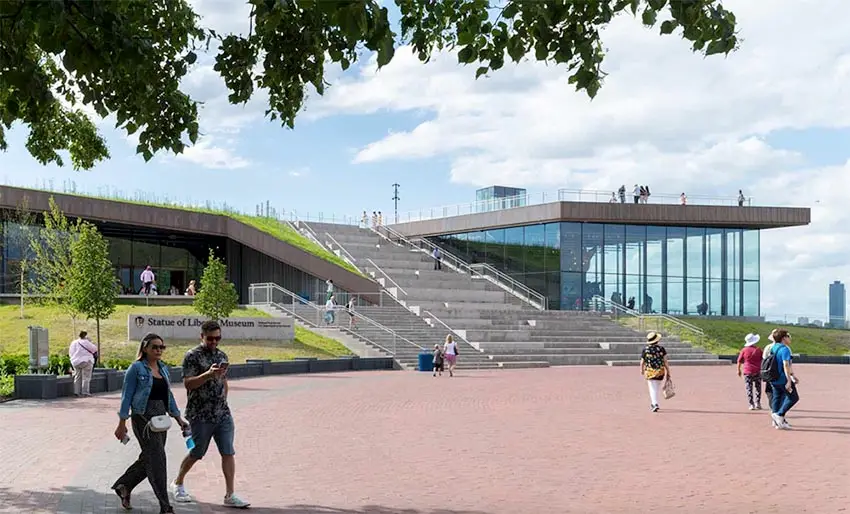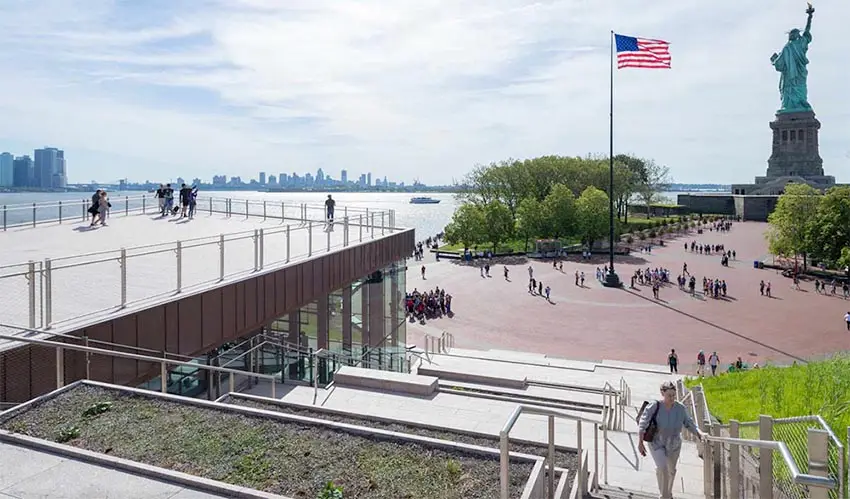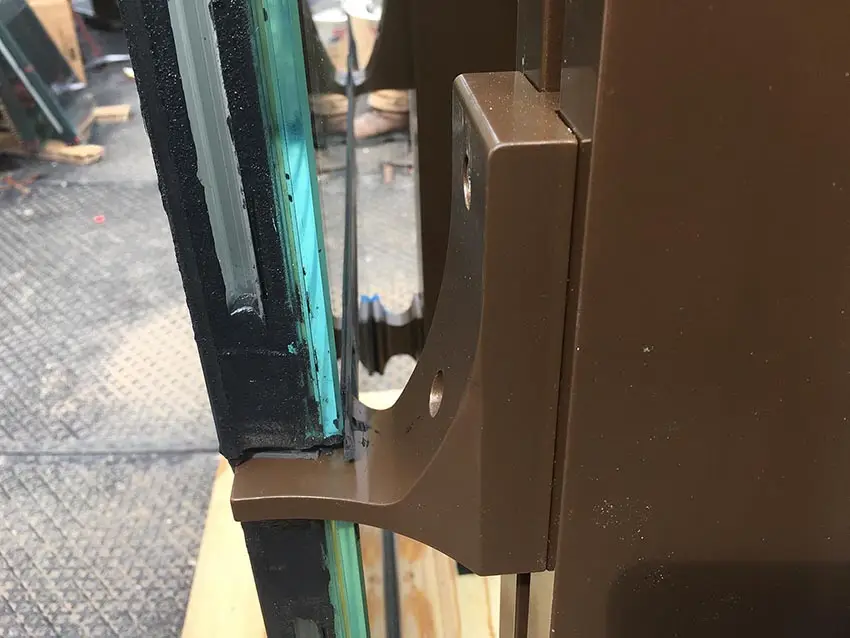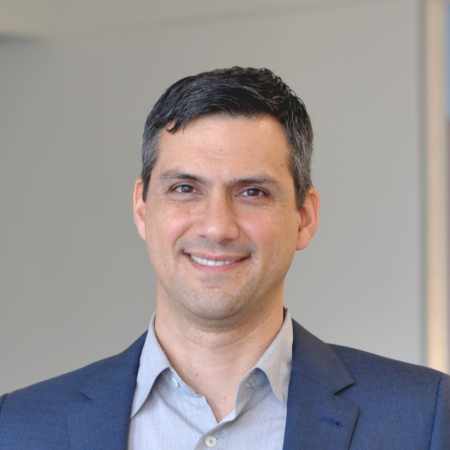The Statue of Liberty Museum by FXCollaborative
New York City, NY | Museum | Phelps Construction Group
- Interview Featuring:
- Daniel Piselli

The new Statue of Liberty Museum on New York City’s Liberty Island replaces a modest museum in the base of the iconic National Monument that no longer met the needs of today’s tourists and sightseers.
Across a small park, the new building is accessible to millions of visitors and acts and an extension of the park’s landscape with planted areas and a large green roof. The new museum’s low profile does not compete with the statue, and it is made from native materials used in the original construction, including granite, bronze, and a variety of native vegetation. Expansive glass walls are bird-friendly and give way to expansive views of the city, the harbor, and Lady Liberty herself.
Acelab spoke with FX Collaborative Director of Sustainability Daniel Piselli about the project and how glass helped the team realize their design objectives.


Acelab: How did the site and its relationship to the Statue of Liberty determine your use of glass?
Daniel: The roof is envisioned as a ground plane that is raised and peeled, so the glass and the walls are like the palisades or cliffs. We exaggerated that overall gesture for the curtain wall part, because it faces the statue and the city. Then there are a few punched [Schüco AWS 75] windows on the other side of the building.

The museum's angular forms and spaces are shaped by expansive views and the irregularity of the water's edge. (© Image by Iwan Baan)
Acelab: What were the design priorities for the curtain wall?
Daniel: Well, visibility in and out of the museum was very important. A lot of visitors would already have enjoyed views of the city and statue, so crystal clear clarity wasn't what we needed. But we did want a sense of openness and a blurring of inside and outside. We ended up arriving at a system made by Innovation Glass where the mullion is separated by a couple of inches from the glass. There are connector pieces, but essentially the glass goes past the mullion and you can see in between them. We wanted this to accentuate the openness and I think it's quite successful.
The other major imperative was Bird Collision Mitigation, which was actually in the National Park Service Design Guide guidelines. That wasn't mandatory in their guidelines but it was kind of encouraged. It's an issue that we know and have been working on for many years so we know what to do.
CAD Drawing
Acelab: Interesting. What were some of the other constraints that the National Park Service gave you?
Daniel: They're mostly concerned with durability and maintenance over time. It’s quite an effort for them to maintain these facilities. Their main priorities beyond design success are things like making sure that when they shovel the sidewalks, they aren't breaking the glass unintentionally. We have this detail at the base of the curtain wall that is a two-inch-thick precast concrete band around the bottom of the glass that acts as a snow shovel stop.


Acelab: What went into the process of finding these products?
Daniel: First, we look at other projects and online databases for things like the door products and the punched window products. We also have client reps or product reps that are always coming in and talking to us. I had previously done research on very low-energy buildings and very high-performance products. The museum is a LEED gold building and we had pretty high goals for energy efficiency. The punch windows and the exterior opaque doors [Ceco Door Trio-E] are both relatively high performing. The windows are even used in passive house projects.
Products from this Case Study on Acelab
Windows by: Schuco AWS 75
Click on Images to see more
Browse AllAcelab: Why did you choose these punch windows in certain places and in curtain walls in others?
Daniel: Yeah, the curtain wall is in the public areas such as the galleries and the public entrance. Punch windows are only in a couple of offices and a break room for the park rangers where we wanted to have some natural light. There's always a balance between cost and daylight and views and performance. Curtain walls look great and are justifiable in the public spaces but for most offices, windows do just fine.

A look of the original torch from the interior of the museum - the expansive bird-friendly glass facade brings together the interior and exterior spaces.(© Image by Iwan Baan)
Acelab: Did you work with consultants on choosing these project products or with the manufacturers with it? Was there a collaborative process and trying to figure out which products to use?
Daniel: We achieved the LEED credit for Bird Collision Mitigation. To get it, we designed a custom frit pattern that's on all the glass including the curtain wall, the punch windows, and even the glass elevator that comes out on the roof. It is all the same [Saint Gobain] glass and the same pattern. We worked with the manufacturer to achieve that custom pattern. Looking out from the museum, we noticed that everything was vertical: the statue, a flagpole, tree, and buildings in the skyline. So we designed this pattern of vertical lines of dots. They are straight lines but you can see around dots better and the line gets a little blurrier.
Thanks to Dan and the FXCollaborative team for speaking with us! You can read more about The Statue of Liberty Museum on their website.
This interview was conducted by ADvsCOPY for Acelab. It has been condensed and lightly edited.
